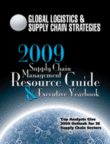
Visit Our Sponsors |
|
|
|
|
|
|
|
|
|
|
|
|
|
|
|
|
|
|
|
|
|
|
|
|
|
|
|
|
|
|
|
|
|
|
|
|
|
|

Energy efficiency and climate change have dominated the supply chain environmental agenda over the last year. Customer awareness, fueled by a 20-fold increase in media coverage and stronger scientific evidence, convinced global corporations to embrace "green" at all levels. Top executives at major corporations have publicly committed to adding the environment to their agendas, creating a ripple effect throughout their supply chains. High fuel prices made investments on carbon footprint reduction projects financially attractive, contributing to even bolder claims on environmental leadership. At the same time, governmental and NGO initiatives related to climate change achieved significant milestones; a record number of companies joined the Carbon Disclosure Project; there was explosive growth in the EPA SmartWay Program; and PAS2050, a carbon footprint standard for supply chains sponsored by the Carbon Trust, was released.
With increasing economic uncertainties, there will be a slowdown in environmental related projects in supply chains. Short-term financial pressures and lower energy prices will make it harder to justify "green" investments. However, supply chain leaders will recognize the long-term benefits of maintaining a steady course in this area. This will bring some order to the environmental hype:
• Environmental Leaders or Not. Supply chains that lack environmental leadership will be forced to revisit (and probably drop) their recent commitments to "green." It will be harder to force the redefinition of traditional supply chain practices in order to accommodate aggressive environmental agendas. This will create new opportunities for truly committed supply chains to consolidate long-lasting competitiveness in this area.
• Consolidation of Green Partnerships. Leading organizations will continue to build stronger partnerships to identify environmental opportunities throughout the supply chain. These partnerships will increasingly include government and NGO institutions that help balance the short-term vs. long-term tensions.
• Sound Environmental Metrics. Cost pressures will force environmental leaders to develop consistent metrics to evaluate environmental and sustainable investments. In addition, a reduced set of initiatives to develop standards will gain momentum setting the stage for the emergence of a common framework. In particular, the GHG Protocol and the PAS2050 will continue to influence carbon footprint measurement.
• Environmental Supply Chain Innovation. Limited available resources combined with a strong environmental focus, will create the right conditions for the emergence of environmental supply chain innovations that go beyond incremental enhancements on energy use, carbon footprint or recycling programs.
The Outlook
Customer awareness of environmental concerns will slow down next year due to tough economic times, while at the same time environmental standards will continue to consolidate giving more transparency to green claims. Some organizations will lose focus in this area, but sustainability will remain a long-term concern for consumers; supply chains that maintain their level of commitment to environmental dimensions over the next couple of years will position themselves for substantial competitive advantage in the future.
RELATED CONTENT
RELATED VIDEOS
Timely, incisive articles delivered directly to your inbox.

